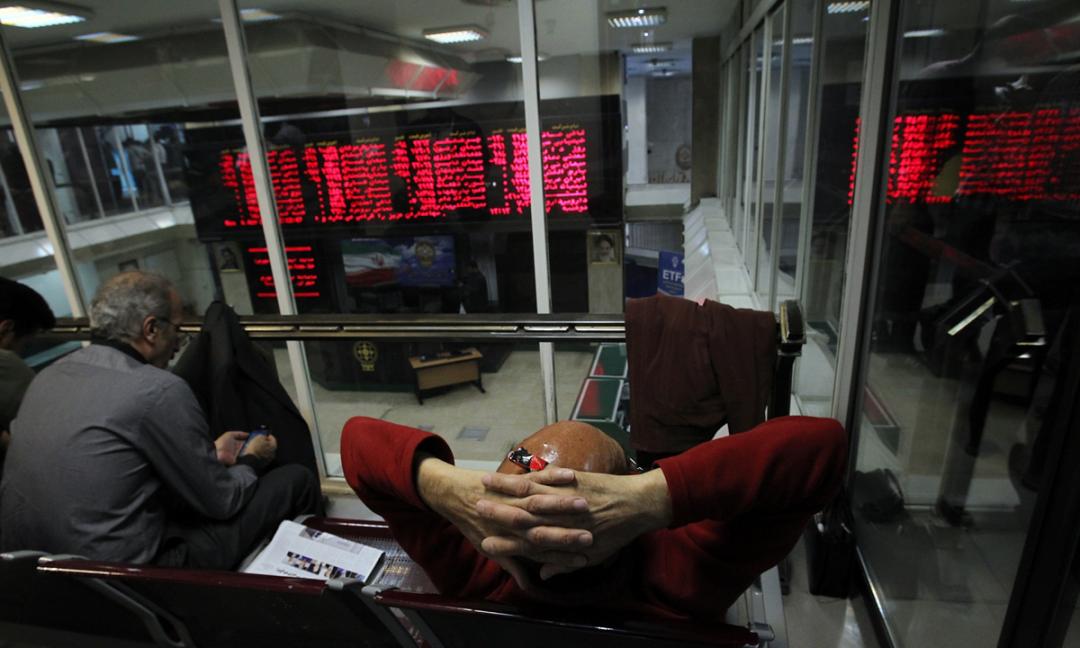Stocks held steady this week slowly, recovering nearly all ground lost in the three-day rout that started on Feb. 10, as a mixture of news rocked Tehran’s markets.
Equities have staged a rally in Tehran since Jan. 16, when sanctions against Tehran’s nuclear program were revoked and opened the door to normalization of business and banking relations with the global community.
Since the lifting of sanctions, the TSE has surged 22%, while its smaller rival the Iran Fara Bourse jumped 15%.
However, a price correction started on Feb. 10, which deflated the market 1.3% during the next two trading days. Stocks spent the rest of last week recouping losses from the correction.
Tehran Stock Exchange’s Benchmark TEDPIX closed 0.47% higher at 77,888 points for the week, just 521 points off the record it set on Feb. 9.
TSE saw its busiest day in recorded history on Feb. 9, with over 3.91 billion shares changing hands and the TEDPIX capping 3.19% or 2,415 points, to close at a 23-month peak of 78,199 points.
What moves the TSE also moves the Iran Fara Bourse. Shares on IFB fell to a one-week low of 799.44 point on Sunday and spent the rest of the week rebounding from the losses. IFB benchmark index, IFX, edged up 3 points or 0.3% by Wednesday’s 819.44 point finish.
Automotive Shares
Automakers have been the top performers. Their performance has been staggering. The shares of SAIPA, Iran’s second largest carmaker, surged a whopping 23% to end the week at 2,459 rials per share. The larger rival Iran Khodro soared 15% to 3,399 rials during the week. The rise of car manufacturers is mainly due to rumored deals between them and global giants like Renault-Nissan Alliance and France’s PSA Peugeot Citroën.
“There are carmakers and then there is the rest of the market,” Reza Qahremani, Maskan investment bank’s head of asset management, told Financial Tribune.
“Two holdings are selling 8% of SAIPA this week. That may give auto stocks a jolt in the right direction and help bring down share prices.”
Enthusiasm about changes in Iran’s economic dynamics due to the lifting of sanctions has trumped the effect of domestic turmoil and a slowdown in the global economy.
Iran’s economy is struggling—growth is close to zero, one in 10 is jobless and many banks face mountains of bad debt. But many investors are betting that by restoring Iran’s links with the rest of the world and attracting foreign capital and technology, the end of sanctions will trigger a long-term economic boom.
Oil and Equities
An increase in Iran’s crude output is one of the immediate effects of sanctions relief.
Iran was the second-biggest producer in the Organization of Petroleum Exporting Countries before sanctions were intensified in 2012. It is now seeking to boost output by one million barrels a day and regain market share.
Iran has already sent oil-filled tankers to Europe, while Chinese and Spanish companies have also booked shipments. However, plummeting oil prices are negating the effect of increase in crude output.
Higher crude output helps fiscal spending but Iran’s largely petroleum dependent stock markets need higher prices for higher profits. Petrochemical producers, now running below capacity, export half the total worth of Iran’s corporate sector exports. Sanctions and indecision about the price of their gas feedstock has made them underperform.
With the lifting of sanctions, their exports are expected to recover, but low crude oil prices and a weak global economy mean the jump in profitability will be small.
Low oil prices have finally created movement among oil producers. Iranian Oil Minister Bijan Namdar Zanganeh and his counterparts from Qatar, Iraq and Venezuela held talks in Tehran on Wednesday aimed at persuading Iran to join a global pact to restrain output, agreed this week by OPEC leader Saudi Arabia and non-OPEC member Russia, the world’s two largest oil exporters.
But the idea has failed to impress the market so far, with oil prices fluctuating sharply this week and trading on Thursday at $35 per barrel.



